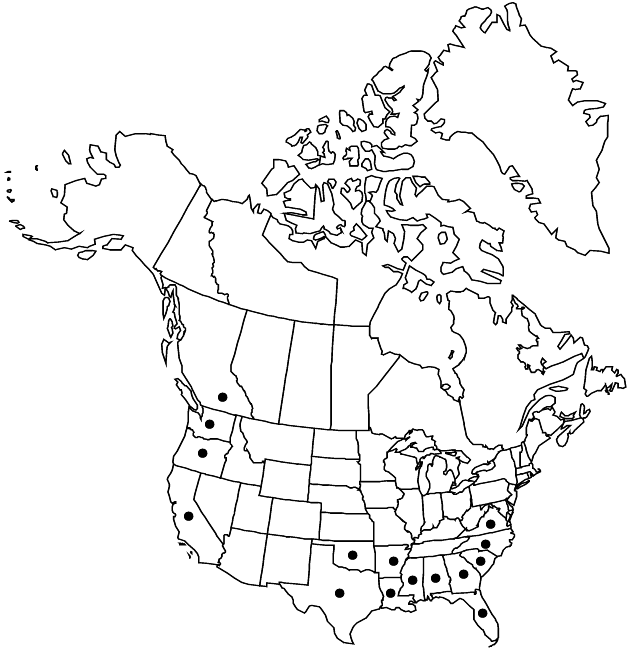Soliva sessilis
Syst. Veg. Fl. Peruv. Chil., 113, plate 24. 1798.
Plants (1–) 2–5 (–25+) cm (high or across), ± villous, glabrescent (not stoloniferous, stems purplish, prostrate to ascending, often rooting at nodes). Leaves basal and cauline; blades ± oblanceolate, 1–2 (–3) + cm, 2 (–3) -pinnati-palmately lobed. Heads mostly scattered along stems. Involucres 2–4 (–5) mm diam. Pistillate florets 5–8 (–17+) in 1–2+ series. Disc-florets 4–8+; corollas 1.5–2.5 mm. Cypselae: bodies ± obovate to lanceolate, (1.5–) 2.5–3+ mm, usually winged (wings entire or ± sinuate to incised, each shoulder usually distally-projecting as spinelike tooth), faces glabrous or ± scabrellous to hirtellous; pappi 0 (persistent stylar sheaths indurate, spinelike, 1–2+ mm, erect or slightly inflexed). 2n = ca. 92 (as S. pterosperma), 110+ (from Portugal), 118–120.
Phenology: Flowering Mar–Jun(–Dec).
Habitat: Disturbed sites, lawns, roadsides
Elevation: 0–600 m
Distribution

Introduced; B.C., Ala., Ark., Calif., Fla., Ga., La., Miss., N.C., Okla., Oreg., S.C., Tex., Va., Wash., South America, also in Europe
Discussion
Selected References
None.
Lower Taxa
"broader" is not a number.
